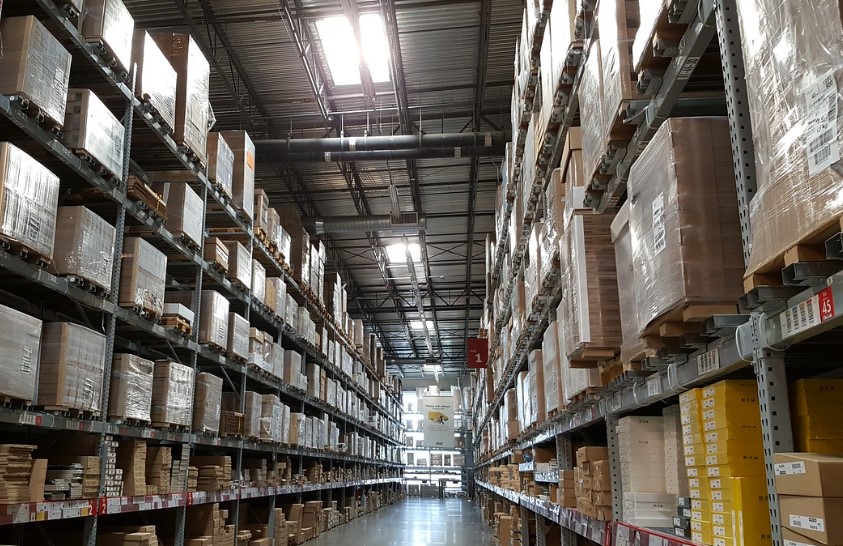Ideas to Save Money as a Warehouse Business

Operating a warehouse business successfully is based on navigating a complex web of expenses while ensuring optimal service delivery. Considering this is an era of heightened competition and economic uncertainty, it’s paramount to find innovative ways to cut costs without sacrificing operational integrity. With that in mind, here are ideas to save money as a warehouse business and grow.
1. Optimize space use
Efficient use of space is critical for reducing costs. Implementing vertical storage solutions can maximize your warehouse’s capacity. Invest in shelving systems and pallet racks that make use of your vertical space. This minimizes the need for additional storage facilities and reduces the overall footprint of your operations.
Additionally, consider reconfiguring your layout to streamline processes and reduce travel time within the warehouse. For example, placing high-turnover items closer to the shipping area can significantly improve efficiency and reduce labor costs. Using mezzanines can also double your usable space without expanding your warehouse, which saves on property costs.
2. Reduce energy consumption
Reducing energy consumption can significantly lower your utility bills. Upgrade to LED lighting, which uses less energy and has a longer lifespan compared to traditional lighting. Implement motion sensors and timers to ensure lights are only on when necessary, further cutting down on electricity usage. Investing in energy-efficient HVAC systems can help maintain a comfortable working environment while reducing energy costs.
For instance, consider installing programmable thermostats and using natural ventilation whenever possible. Conducting regular energy audits can also identify areas where you can make further improvements. Simple steps like sealing windows and doors to prevent drafts can lead to substantial savings over time.
3. Rent equipment
Purchasing new equipment can be a substantial investment, especially for specialized or infrequently used machinery. Instead, consider renting equipment as needed. For instance, deciding on forklift hire in Sydney offers a cost-effective alternative to buying. Renting forklifts allows you to access the latest models without the hefty upfront costs and maintenance expenses.
Moreover, rental agreements often include maintenance and repairs, ensuring your operations are not disrupted by unexpected breakdowns. This flexibility means you can scale your equipment needs according to seasonal demands without the financial burden of ownership. Renting also allows you to try different models to find the best fit for your specific needs before committing to a purchase.
4. Implement preventive maintenance
Regular maintenance of equipment can prevent costly breakdowns and extend the life of your assets. Develop a preventive maintenance schedule for all machinery, including forklifts, conveyor belts, and HVAC systems. This proactive approach helps avoid unexpected repairs and downtime, ensuring smooth operations and saving money in the long run.
For example, routine inspections and servicing of forklifts can prevent major mechanical failures that could halt operations and incur significant repair costs. Additionally, maintaining HVAC systems ensures optimal performance and energy efficiency, reducing utility costs. Implementing a computerized maintenance management system (CMMS) can help track maintenance activities, schedule regular inspections, and manage repair logs effectively.
5. Switch to automation
Automation can streamline your warehouse operations and reduce labor costs. Automated systems for picking, packing, and sorting can enhance efficiency and accuracy. Invest in warehouse management systems (WMS) that integrate with your existing processes. These technologies can optimize inventory management, reduce human error, and improve order fulfillment times.
Automated guided vehicles (AGVs), for example, can transport goods within the warehouse, reducing the need for manual labor. Similarly, robotic picking systems can increase the speed and accuracy of order fulfillment. Although the initial investment in automation technology can be high, the long-term savings in labor costs and increased productivity can justify the expense.
6. Train employees
Investing in employee training can lead to significant cost savings. Well-trained staff are more efficient, make fewer mistakes, and can better handle equipment, reducing the risk of damage. Regular training sessions on safety, equipment operation, and best practices can improve productivity and minimize accidents, which can otherwise lead to costly insurance claims and downtime.
Cross-training employees to handle multiple tasks can also improve flexibility and efficiency, allowing you to optimize labor resources during peak periods. Additionally, ongoing training on the latest technologies and processes ensures your workforce remains competent in adapting to industry changes.
7. Negotiating with suppliers
Buying in bulk often comes with discounts, helping reduce unit costs. Negotiate with suppliers to secure the best deals on the products and materials you need regularly. Establishing strong relationships with suppliers can lead to better payment terms and additional savings. Always compare quotes from multiple suppliers to ensure you get the best price.
If your warehouse frequently requires packaging materials, buying these items in larger quantities can lower the per-unit cost and reduce the frequency of orders, saving on administrative and shipping costs. Additionally, consider forming a purchasing consortium with other businesses to increase your buying power and negotiate better deals.
Final words
Running a warehouse business efficiently requires careful management of resources and expenses. Implementing these strategies can enhance your profitability and improve the overall efficiency and sustainability of your operations. Each of these steps, when thoughtfully applied, can lead to a more cost-effective warehouse, positioning your business for long-term success.